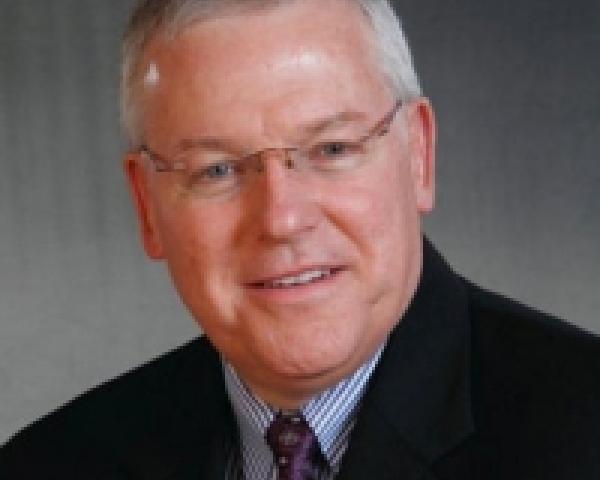On Sept. 3, 2015, a press release was issued by the Carson J Spencer Foundation; RK, a construction company in Denver; and the National Action Alliance for Suicide Prevention. This press release was timed to coincide with Suicide Prevention Month in September and World Suicide Prevention Day on Sept. 10 . This press release announced the distribution of
A Blueprint for the Construction Industry: Suicide Prevention in the Workplace (aka
The Blueprint). One year later, we believe that this document was a catalyst in developing a national movement in suicide prevention in construction. This articles tracks the milestones of this movement and future directions.
In 2010, the National Action Alliance for Suicide Prevention and its Workplace Task Force were launched in conjunction with World Suicide Prevention Day. The co-authors served as inaugural members of the Workplace Force.
The Blueprint was intended to create awareness, generate advocacy and spur action in the construction industry around suicide prevention. In addition,
The Blueprint provided a toolkit for how to discuss mental health and suicide prevention in the construction industry.
Equipped with
The Blueprint, the co-authors began an initiative to break the silence and create a culture of caring. The co-authors sought to gain the attention of the construction industry through a media saturation campaign. The intent was to build a reproducible model within the construction industry that could subsequently be used as a reproducible model by other industries. In short, the coauthors sought to integrate mental health and suicide prevention in safety, health, wellness and employee benefit programs by framing the topics as the “next frontier in safety.”
The Centers for Disease Control and Prevention (CDC) published a report that placed the construction and extraction industry as second-highest in the nation for suicide rates.
But, a year later,
The Blueprint has exceeded expectations. It spawned an outpouring of targeted action that is rippling throughout the construction industry. The impact has been felt in: publications, presentations, projects and partnerships.
Publications
The publishing of
The Blueprint created demand for articles by major independent construction industry publications and those published by trade associations. There have been at least 28 unique articles published since the first one was posted online by the Construction Financial Management Association (CFMA) on Nov. 1, 2015.
See also: Union Pacific Leads on Suicide Prevention
These articles have included both in-print and online versions. The articles have begun to cross over from construction into architecture and engineering, to make this an issue that is being discussed in the integrated AEC industry. The articles have penetrated major industry brands, including
Engineering News-Record (ENR); the Associated General Contractors of America’s Constructor; CFMA’s Building Profits; Associated Builders and Contractor’s
Construction Executive; Construction Business Owner; and the National Association of Women in Construction’s
Image.
Presentations
Once articles were appearing in industry publications, it was easier to solicit presentations. The first presentation that Cal Beyer gave regarding suicide prevention was the September 2015 CFMA Southwest Regional Conference, where he included suicide prevention as part of his company’s commitment to Safety 24/7: safety at work, home and play. The second presentation he delivered was to the South Sound Chapter of the National Association of Women in Construction in November 2015 near Seattle. These two early successes made it easier to “sell” the concept of presentations.
Sally Spencer-Thomas presented at the January 2016 Men’s Health Conversation at the White House in January 2016, while Beyer presented at the pre-meeting at the Department of Health and Human Services. The next two presentations were led by Spencer-Thomas in February 2016 at an executive roundtable sponsored by Lendlease in Chicago and to the Associated General Contractors of Washington. More than 100 attendees heard Beyer’s presentation at the Pacific Northwest Forum of the National Association of Women in Construction in April 2016. Two sessions were facilitated at the CFMA Annual Conference in June 2016. Similar sessions were offered in Portland, OR, in June to the AGC of Oregon and in Boise, ID, in July for the Idaho Chapter of CFMA .
The marquee event was held in Phoenix on April 7, 2016, when more than 100 attendees participated in the CFMA’s Regional Suicide Prevention Summit. Similar summits are scheduled by CFMA chapters for Charlotte on Nov. 9, 2016, in Portland, on Nov. 16 and Chicago on Feb. 17, 2017. A series of summits have been proposed by numerous CFMA chapters in 2017, including: Denver; Washington, DC.; Indianapolis; Houston; and Las Vegas.
Projects and Partnerships
The first partnership was established with CFMA through publications — including the first article as well as two custom PDF publications highlighting both the “why” and “how” to address suicide prevention in construction companies. Moreover, CFMA launched the aforementioned Construction Industry Alliance for Suicide Prevention and created an executive committee task force.
Clare Miller, the Executive Director of the Partnership for Workplace Mental Health, has been distributing periodic updates on the construction industry to her organization’s members. A partnership was formed with the JP Griffin Group, an employee benefits consultancy in Scottsdale, AZ. The Griffin Group created artwork for four custom poster templates that has been provided to the construction industry at no charge. Hoop 5 Networks, an IT system consulting company from San Diego, provided web development services for the Construction Working Minds website maintained by the
Carson J Spencer Foundation.
Union Pacific invited Spencer-Thomas and Beyer to present in Omaha at the Railroad Suicide Prevention Summit on Aug. 24, 2016, so that rail industry leaders could transfer the lessons learned from construction to their own industry. Likewise, the U.S. Department of Veterans Affairs requested the construction industry be represented at its roundtable on suicide prevention on Aug. 30, 2016. While Beyer was not able to attend, he invited representatives from the CFMA and ABC associations to attend.
See also: A Manager’s Response to Workplace Suicide
Finally, the best example of the growing partnership is the creation of a construction subcommittee on the workplace task force of the National Action Alliance for Suicide Prevention. There are now nine members on this subcommittee, and it is the largest subcommittee of the workplace task force. These subcommittee members represent a broad cross-section of the construction industry. The nine subcommittee members are:
- Cal Beyer; Risk Management Director; Lakeside Industries, Inc. (Issaquah, WA)
- Dr. Morgan Hembree; Leadership Consultant; Integrated Leadership System (Columbus, OH)
- David James; CFO; FNF, Inc. (Tempe, AZ)
- Tricia Kagerer; Risk Management Executive; American Contractors Insurance Group (ACIG); Dallas.
- Joe Patti; Vice President & CFO; Welsbach Electric Corporation (College Point, NY)
- Christian Moreno; Vice President; Health Risk Solutions; Lockton Dunning (Dallas)
- Bob Swanson; Retired President; Swanson & Youngdale, Inc. (Minneapolis)
- Sally Spencer-Thomas, CEO, Carson J Spencer Foundation (Denver)
- Bob VandePol; Executive Director, Employee Assistance program; Pine Rest Christian Mental Health Services (Grand Rapids, MI)
- Michelle Walker; Vice President Finance & Administration; Spec ialized Services Company (Phoenix)
Conclusion
Thus, in less than one year, the construction industry has moved from not thinking about suicide prevention to being a leading industry in the effort. In fact, in May 2015,
Forbes published an article called, “What Construction Workers Could Teach Other Industries About Mental Health Awareness.” This demonstrated how broadly this awakening and action has been felt.
This first phase of garnering awareness and political will is critical in starting this national movement. The next phase is to institutionalize these efforts by bringing best practices in suicide prevention to companies, researching outcomes to better understand what works and developing policy and procedures that support mentally healthy, resilient and psychologically safe workplaces.











